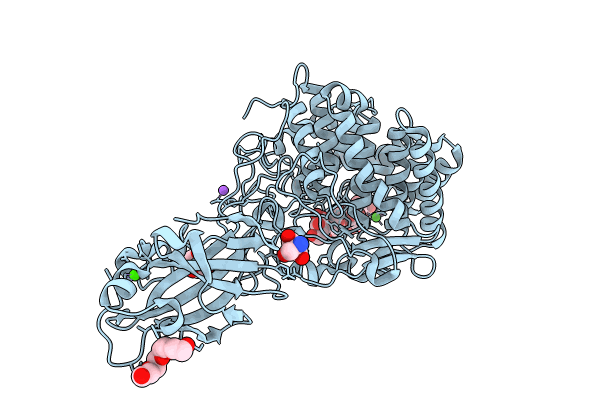
Deposition Date
2023-09-10
Release Date
2024-02-14
Last Version Date
2024-10-16
Entry Detail
PDB ID:
8U4F
Keywords:
Title:
Crystal Structure of BlCel9A from Glycoside Hydrolase Family 9 in Complex with Cellohexaose
Biological Source:
Source Organism:
Bacillus licheniformis DSM 13 = ATCC 14580 (Taxon ID: 279010)
Host Organism:
Method Details:
Experimental Method:
Resolution:
2.01 Å
R-Value Free:
0.22
R-Value Work:
0.17
R-Value Observed:
0.18
Space Group:
C 1 2 1


